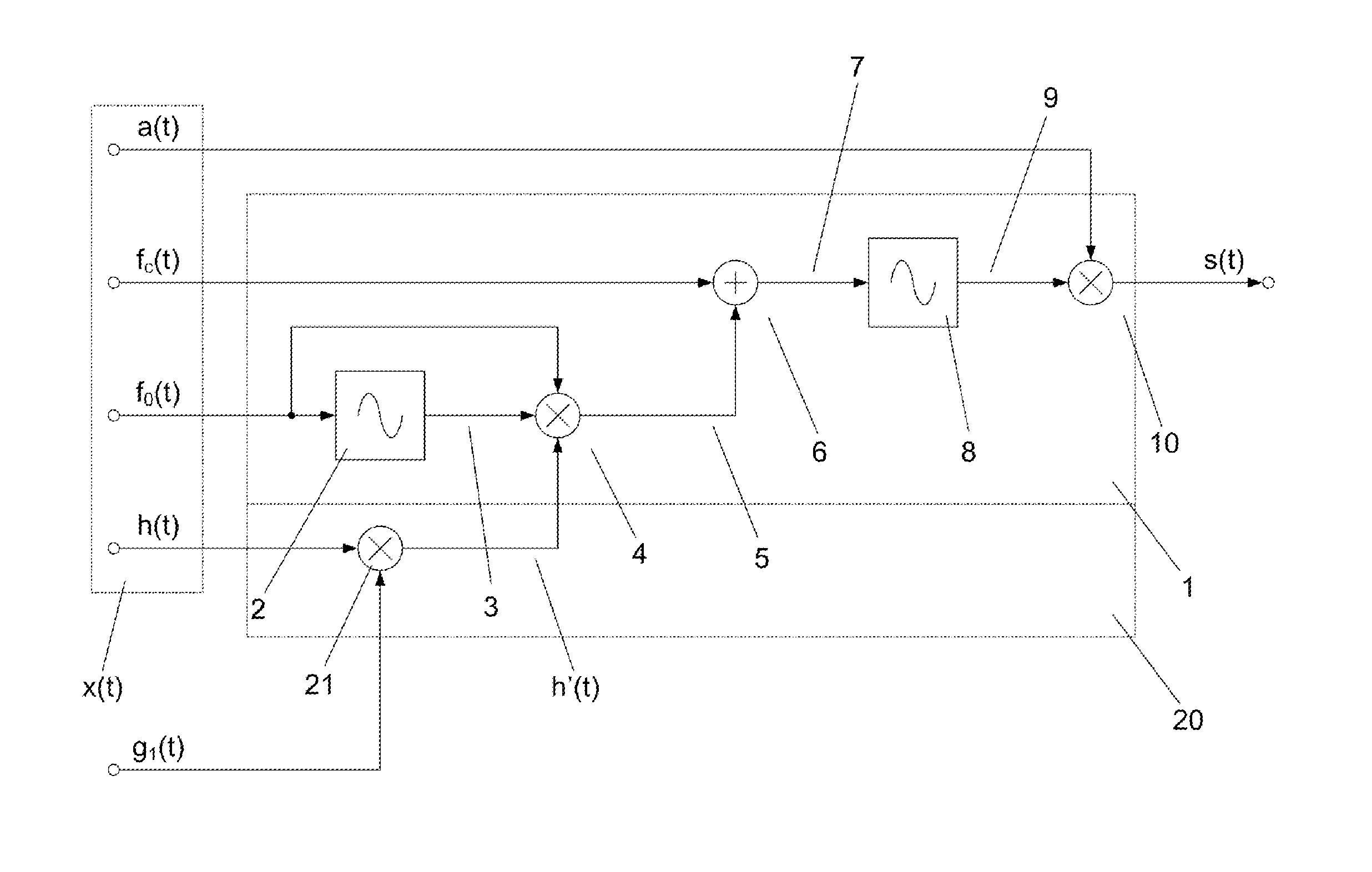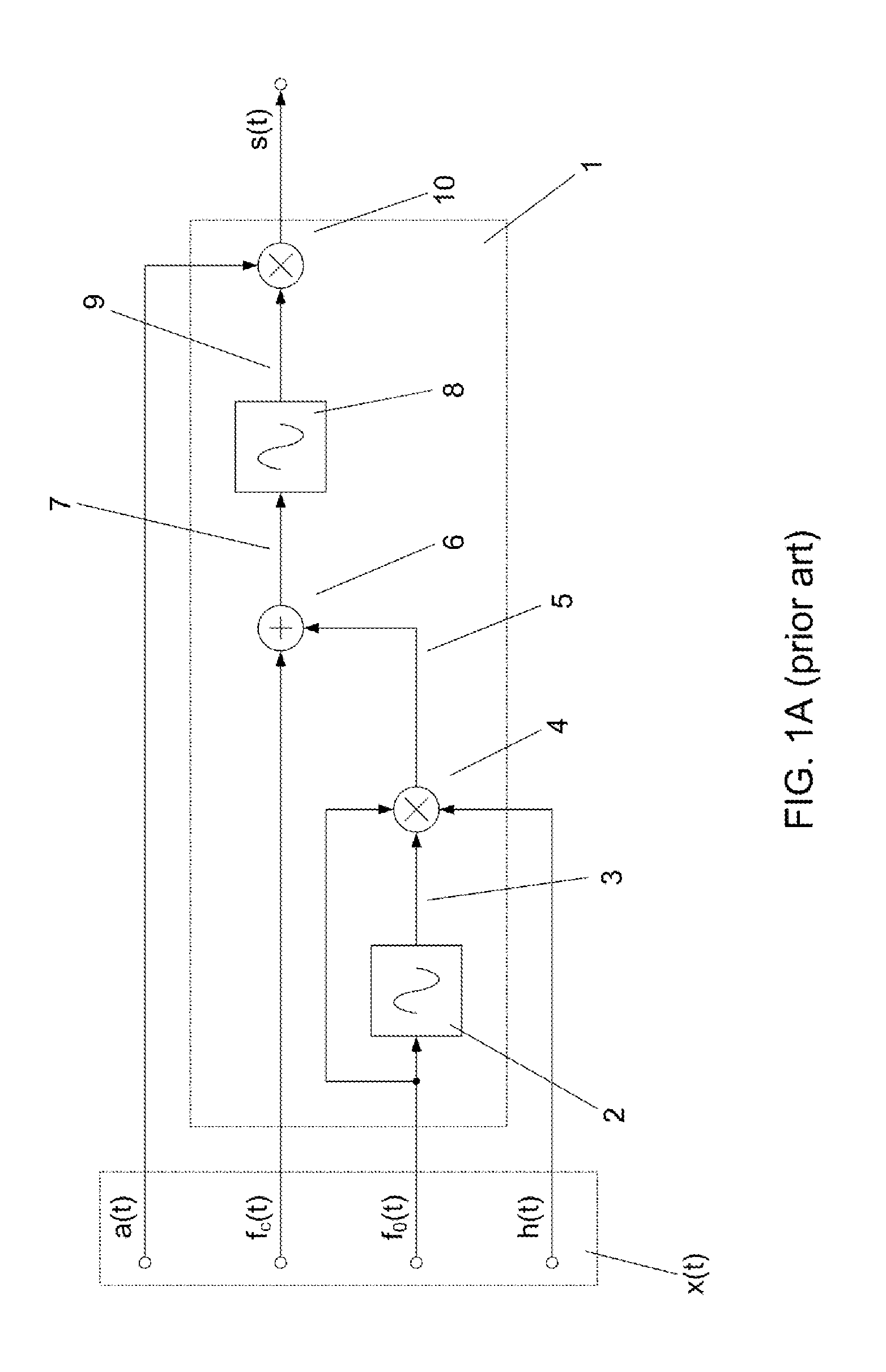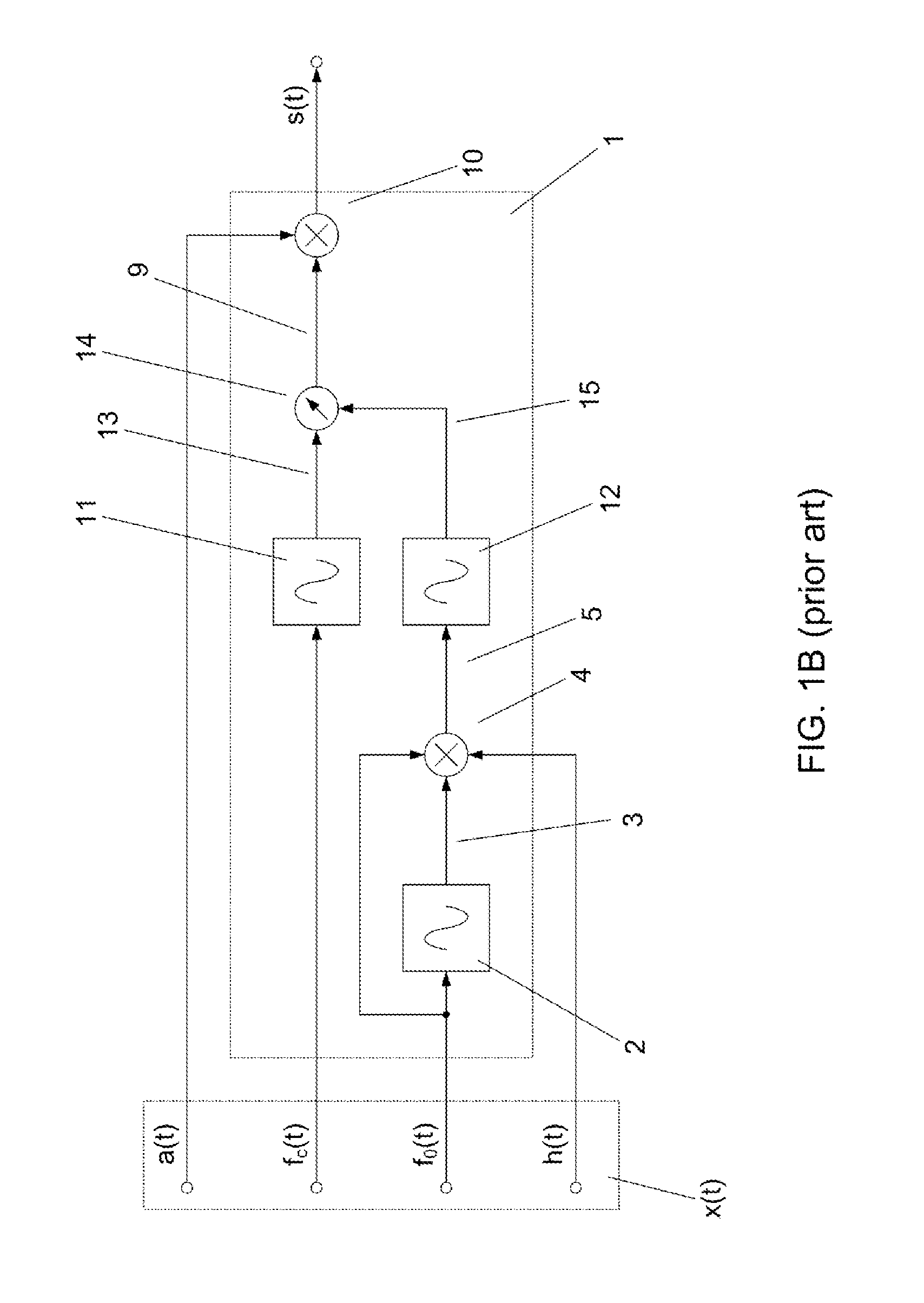Methods and apparatus for processing audio signals
a technology of audio signals and processing methods, applied in the field of audio signal processing methods, apparatus and systems, can solve the problems of reducing the ability of the human auditory system to correctly decode the cues of sounds, aging also contributes to limiting the access to tfs cues, and is not always possible,
- Summary
- Abstract
- Description
- Claims
- Application Information
AI Technical Summary
Benefits of technology
Problems solved by technology
Method used
Image
Examples
first embodiment
[0065]FIG. 2 shows in a functional block diagram an extended FM modulator 20 (XFM modulator) according to the present invention. In addition to the functional blocks of the basic FM modulator 1 of FIG. 1A, the XFM modulator 20 comprises a multiplier 21, which multiplies the FM index signal h(t) of the received XFMR x(t) with a first gain signal g1(t) and provides the resulting product in a modified FM index signal h′(t) that is fed to the multiplier 4. The amplitude of the FM index signal h(t) may thus be modified, i.e. amplified or attenuated, by setting the first gain signal g1(t) to a value different from unity. Since the modified FM index signal h′(t) controls the spectral distribution of the energy in the modulated audio signal s(t), the first gain signal g1(t) may be used to alter this spectral distribution.
[0066]The input received by the XFM modulator 20 is preferably an XFMR x(t) that has been demodulated from an input waveform audio signal i(t) (see FIGS. 6-9). Accordingly,...
second embodiment
[0075]FIG. 3 shows in a functional block diagram an XFMR modifier 30 according to the invention. The XFMR modifier 30 receives an XFMR x(t) and provides a modified XFMR x′(t) with an amplitude modulation signal a(t), a carrier frequency signal fc(t), a pitch signal f0(t) and a modified FM index signal h′(t). The first three mentioned XFM signals a(t), fc(t), f0(t) in the modified XFMR x′(t) are equal to the corresponding XFM signals in the received XFMR x(t), whereas the modified FM index signal h′(t) equals the product of the FM index signal h(t) of the received XFMR x(t) and a first gain signal g1(t). Similarly to the XFM modulator 20 in FIG. 2, the XFMR modifier 30 comprises a multiplier 21, which multiplies the FM index signal h(t) with the first gain signal g1(t) and thus provides the modified FM index signal h′(t).
[0076]The modified XFMR x′(t) may be provided to a basic FM modulator 1 or an XFM modulator 20 for provision of a modulated audio signal s(t). Thus, the modification...
PUM
 Login to View More
Login to View More Abstract
Description
Claims
Application Information
 Login to View More
Login to View More - R&D
- Intellectual Property
- Life Sciences
- Materials
- Tech Scout
- Unparalleled Data Quality
- Higher Quality Content
- 60% Fewer Hallucinations
Browse by: Latest US Patents, China's latest patents, Technical Efficacy Thesaurus, Application Domain, Technology Topic, Popular Technical Reports.
© 2025 PatSnap. All rights reserved.Legal|Privacy policy|Modern Slavery Act Transparency Statement|Sitemap|About US| Contact US: help@patsnap.com



